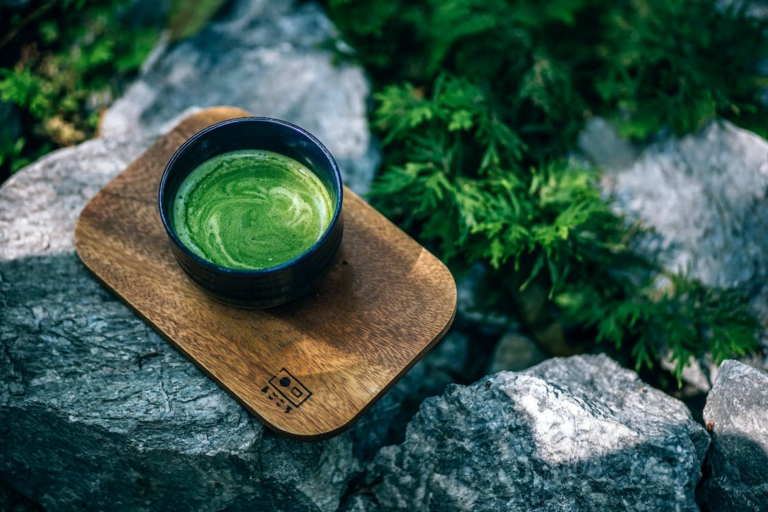Fun and Interesting Tea Facts to Increase Your Tea Knowledge
You can learn a wealth of fascinating information about tea that will increase your understanding of it and make you appreciate your next cup even more. The mysteries of tea are waiting to be discovered, from the realization that drinking tea doesn’t cause a caffeine crash to the realization that boiling water isn’t always the best option. With the knowledge of these details, your tea experience will grow beyond merely taking a sip of this delicious beverage.
Unveiling lesser-known tea facts that will amaze you
Boiling water isn’t always ideal for brewing tea!
If you’ve ever sipped on a cup of bitter green tea, the culprit might not be the tea itself, but rather the scalding hot water used to brew it. Here’s one of the golden facts about tea making: not all teas should be made with boiling water, particularly the delicate green tea varieties.
The secret to a delightful cup lies in the details and that includes water temperature. When the water’s too hot, it can ruthlessly rob a tea of its finer nuances. So, the next time you’re tempted to unleash a rolling boil on those tender tea leaves, pause. Instead, check the temperature on the tea package and steep accordingly.
Sustained energy: tea’s caffeine without the crash
Caffeine in coffee increases alertness by completely blocking off a neurotransmitter (adenosine) from inhibiting brain activity. But as caffeine’s effect dissipates, there’s a sudden surge in the activity of adenosine and it signals the brain that it’s time to wind down – causing the infamous crash. Unlike coffee, tea offers a smoother caffeine experience, lessening the chances of a sudden energy slump. This advantage is rooted in tea’s rich antioxidant content. These antioxidants ease caffeine absorption, creating a gradual caffeine release into your system. This ensures that the energy surge doesn’t nosedive into the slump.
The unique essence of leafless tea
Behold, the tea that defies tradition! Matcha – a Japanese treasure – is not brewed from tea leaves. Instead, whole tea leaves are meticulously ground to create an exquisite powder, which is brewed in a unique and precise process resulting in a vibrant and frothy cup. In fact, the name ‘Matcha’ translates to ground (‘ma’) tea (‘cha’) in Japanese.
The cooling effect: hot tea beats the heat!
These facts about tea may be strange but they’re backed by science. When the fiery sun scorches the earth, quenching your thirst with a cuppa might just be the coolest move. When we take a sip of that hot cuppa, the nerves in our system send signals to the brain, saying, “Hey, it’s gettin’ a bit toasty in here!” And the brain decides it’s time to sweat. Now, sweating is nature’s way of keeping us cool. As sweat evaporates, it whisks away the heat from our skin, leaving us feeling cooler. These interesting facts about tea make it a cool drink.
Sharing the mate: a ritual of south america
A tea with a sharing ritual is yerba mate. This South American tradition involves brewing the tea in a gourd and passing it around among friends, creating a sense of community and togetherness. It’s a social experience where participants take turns sipping from the same, metal or wooden, straw called a “bombilla.” The act of sharing and passing the mate represents hospitality and friendship in many South American cultures.
Beyond the cup: surprising uses of tea
Here’re some fun facts about uses of tea leaves for purposes other than drinks. Firstly, it’s a natural deodorizer, keeping things fresh. But it not only removes odour from home but also from our breath. Just a gargle with brewed tea does the trick. Continuing with fun facts about tea benefits for our body, you can even boost your skincare game with tea! Steeped green teabags as eye masks reduce inflammation and de-puff.
Some facts about tea relate to what it can do to your recipes. It can add that unique flavour to your grub and make it a dinnertime delight. And if some tea is left, use it as compost, be it loose leaf or teabag, just make sure they’re microplastic-free and biodegradable. Like we have at teapigs.
One pound of tea: how many leaves does it take?
Did you know that crafting a single pound of tea requires a staggering 2,000 petite leaves? It’s a mind-boggling number! Each tiny leaf plays a crucial role in delivering the flavors and aromas we cherish in our brew. From the delicate plucking process to the intricate art of processing, it’s a labor of love that demands attention to detail. So, next time you savor a cuppa, take a moment to appreciate the remarkable efforts of the workers who plucked and processed 2,000 leaves for your delightful infusion. These facts about tea are a testament to the dedication and craftsmanship behind every sip.
The champagne of teas: exploring the extraordinary
One of the fun facts about tea is its comparison to Champagne. The First Flush Darjeeling is that prized brew. It hails from the Himalayan foothills – protected by its geographical origin and cultivated organically. Its limited production and reliance on nature’s whims make it an exquisite rarity. Harvested between late Feb to late Apr, this lot takes tea-drinking bliss up a notch.
The process of producing this drop is a real labour of love. Skilled hands meticulously handpick shoots with two leaves and a bud, making approximately 20,000 to 22,000 picks to create just one kilo of Darjeeling tea. Cheers to these tea facts!
Diverse delights: exploring facts about tea varieties!
One of the vital tea facts is that all its tea varieties, be it black tea, green tea, oolong, or white tea, spring from the Camelia Sinensis plant. But here’s the kicker – it’s all in the oxidation game! The interesting facts about tea varieties relate to its leaves meeting the air and undergoing enzymatic magic. Black tea, fully oxidized, packs a punch with its robust flavor. Oolong’s the middle ground, semi-oxidized, boasting a balmy taste. Now, green and white tea takes a lighter path, with only a dash of oxidation for their mellow, delicate flavors.
Largest cuppa: brewing guinness world records
In Mexico, Tonic World Center brewed up the largest cuppa ever, a whopping 9,123 litres, using a giant 10,000-litre cup and a 96-kilo tea bag. But that’s not the biggest tea bag – in Saudi Arabia a Guinness record was stirred up with a mammoth 250-kilo tea bag. That could fuel a whole bunch of tea parties!
Incidentally, there’re facts about tea parties also. The Cancer Council organised the grandest tea gatherings of 280,246 participants across 6,062 locations in Australia – raising AUD 7million. Hughes’ tea party was smaller, but it took facts about tea party to a new height – a stunning 6496 metres on Mount Everest.
Tea titans: the worlds most avid tea drinkers
Continuing with facts about tea records, Turkey took the crown for the biggest tea drinkers in 2022 – a whopping nine in ten folks said they regularly sip the hot brew. Each Turk’s a real tea sipper, guzzling an average of 1300 cups a year. That’s 3 to 5 cups a day, and up to 10 in winters. Tea’s a tradition ingrained, bringing folks together for a good chat and a bit of socializing. Nothing like a cuppa to bond with mates!
Aussies also love a good cuppa and around 9.8 million tea drinkers out of a total 24.6 million, relish at least one cuppa each week.
The duchess’s delight: the origin of afternoon tea
For one of the fascinating facts about tea practice, step back to the year 1840 and envision the quaint world of English aristocracy. Amidst the lavishness, a tradition was about to be born, and it all began with a rumbling stomach and a thoughtful Duchess. Enter Anna, the seventh Duchess of Bedford and a trendsetter. She was hungry at around 4 p.m. (a time that wasn’t close to any mealtimes). With some thought, she summoned tea and snacks – setting in motion a timeless trend. Thus, from her afternoons of indulgence, “afternoon tea” emerged as a practice that continues even today.
Fortune-telling for fun: the art of tea leaf reading
Well…just the existence of the mentioned practice is part of the listed facts on tea, and not the authenticity behind it. Tasseography is an intriguing divination practice that employs tea leaves as a means to glimpse into the future. With a keen eye for patterns, tasseomancers – the practitioners – offer personalized predictions or insights to inquirers. From matters of the heart to career prospects, health, and more, these interpretations unravel life’s possibilities. Yet, tasseography is embraced for its playful allure and not for anything scientific.
The fascinating tea-horse barter
This is one of those hard-to-believe facts about tea. For over a millennium, the ancient tea horse road was a trade route connecting China’s tea-growing regions with Tibet, with tea being traded for horses and other goods. Porters and animals braved the harsh terrain over a distance of more than 2000km – bearing colossal loads of about 90kg for a 3 month trek. Conquering perilous a pass at a height of over 4500m, they journeyed to Lhasa for a unique barter: a horse for some tea (well…about 60 kg).
Conclusion
And there you have it! The interesting facts about tea that’ll leave you more informed. From the mystical art of tasseography to the amazing varieties of tea and even record-breaking feats like biggest teabag, teacup and the grandest party in Australia – tea has proven to be more than just a beverage with these fascinating facts. It’s a vessel of history, culture and science, offering a myriad of stories and surprises in every cup. So, the next time you savour your favourite brew, remember that within its comforting warmth lies a world of knowledge and wonder waiting to be explored.



